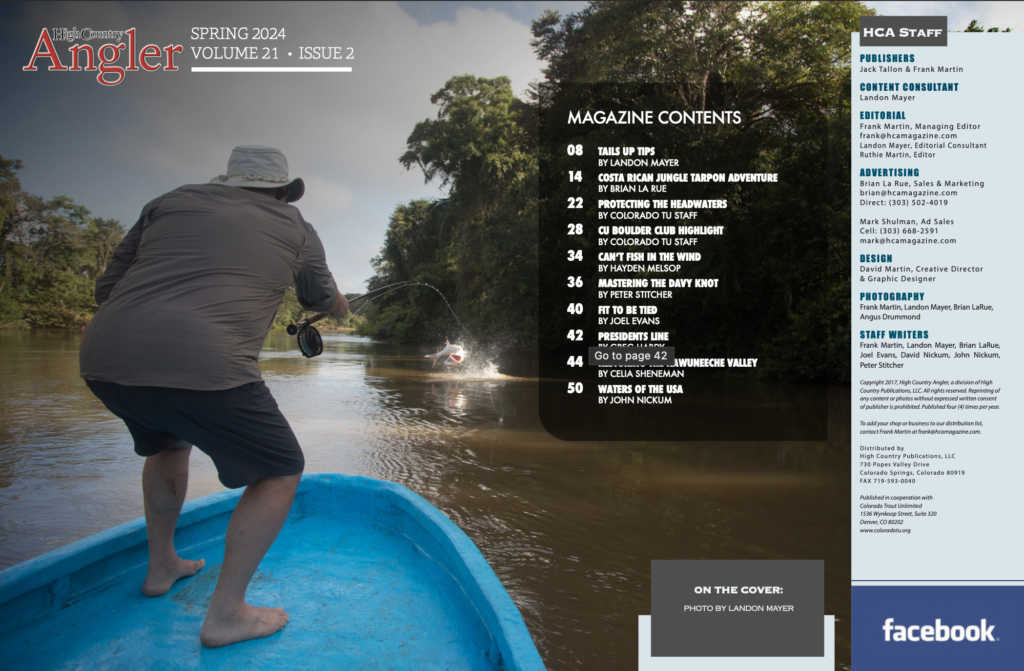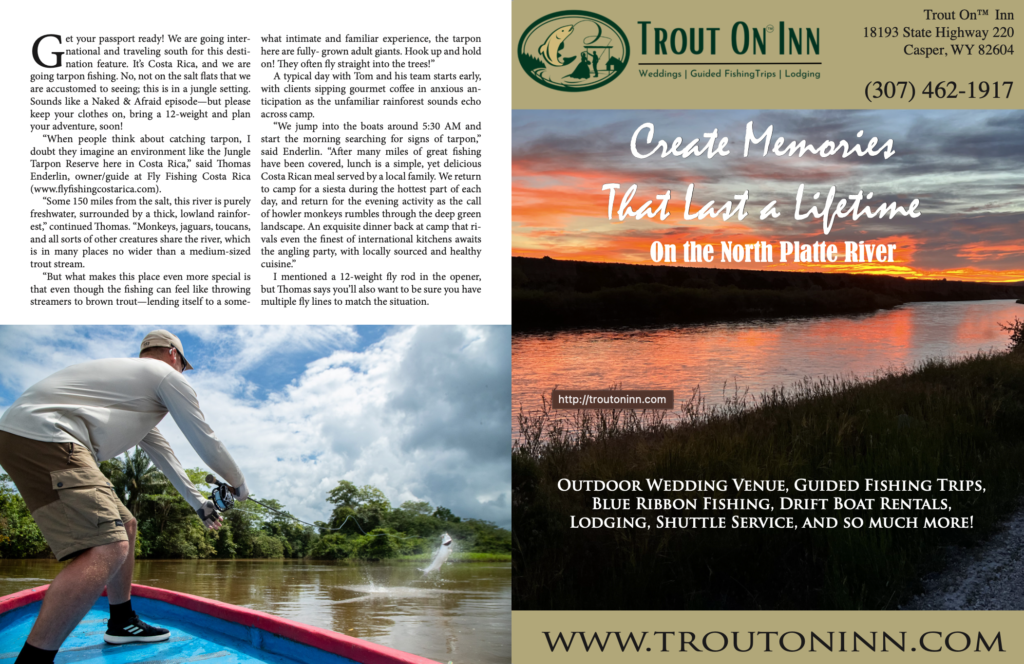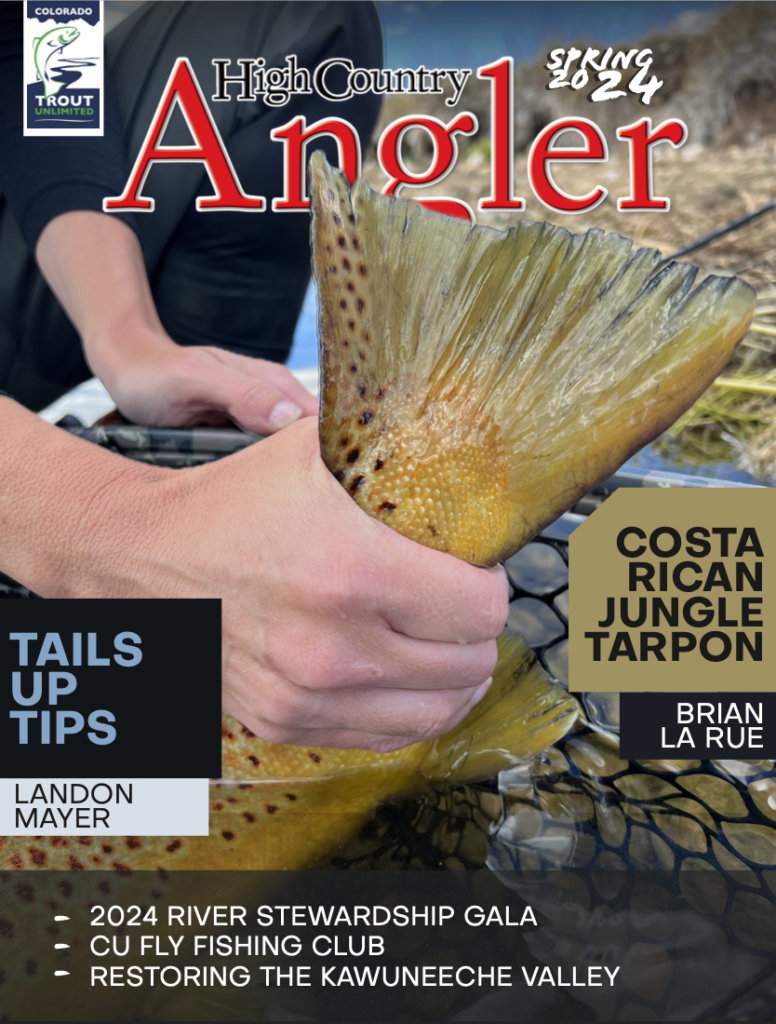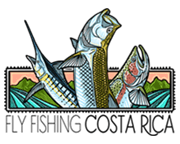High Country Angler, the official magazine of Colorado Trout Unlimited, features Costa Rica’s Jungle Tarpon Reserve in their Spring 2024 issue. Check it out!!
Costa Rica Jungle Tarpon Adventure
By Brian La Rue


Get your passport ready! We are going international and traveling south for this destination feature. It’s Costa Rica, and we are going tarpon fishing. No, not on the salt flats that we are accustomed to seeing; this is in a jungle setting. Sounds like a Naked & Afraid episode—but please keep your clothes on, bring a 12-weight and plan your adventure, soon!
“When people think about catching tarpon, I doubt they imagine an environment like the Jungle Tarpon Reserve here in Costa Rica,” said Thomas Enderlin, owner/guide at Fly Fishing Costa Rica (www.flyfishingcostarica.com).
“Some 150 miles from the salt, this river is purely freshwater, surrounded by a thick, lowland rainfor- est,” continued Thomas. “Monkeys, jaguars, toucans, and all sorts of other creatures share the river, which is in many places no wider than a medium-sized trout stream.
“But what makes this place even more special is that even though the fishing can feel like throwing streamers to brown trout—lending itself to a somewhat intimate and familiar experience, the tarpon here are fully- grown adult giants. Hook up and hold on! They often fly straight into the trees!”



A typical day with Tom and his team starts early, with clients sipping gourmet coffee in anxious anticipation as the unfamiliar rainforest sounds echo across camp.
“We jump into the boats around 5:30 AM and start the morning searching for signs of tarpon,” said Enderlin. “After many miles of great fishing have been covered, lunch is a simple, yet delicious Costa Rican meal served by a local family. We return to camp for a siesta during the hottest part of each day, and return for the evening activity as the call of howler monkeys rumbles through the deep green landscape. An exquisite dinner back at camp that ri- vals even the finest of international kitchens awaits the angling party, with locally sourced and healthy cuisine.”
I mentioned a 12-weight fly rod in the opener, but Thomas says you’ll also want to be sure you have multiple fly lines to match the situation.
“We usually fish various lines throughout a given day, so clients are recommended to bring 12 -weights rigged with full intermediate, and spare spools with sink-tips, and floating lines,” added Enderlin. “We’ve found that this allows our guide team to best handle what is a diverse and sometimes challenging fishery. The tarpon here eat a variety of small cichlids and other “sardinas,” so flies that match the hatch use a variety of vivid colors and shapes. As a last resort, black and purple flies are always a favorite if, in the end, the fish don’t react to the tropical colors.
“The fishing is either in the river or lagoons,” says Enderlin. “In the river, we search for tarpon either rolling or actively smashing bait in the branches that hang into the currents, and anglers present flies on a swing much like you would for oversized trout. “Trout or salmon anglers can do quite well here, as they understand how to present a fly in current,” added Thomas. “The lagoons are what we consider the archery of our river, with guides masterfully poling skiffs across the black mirror of tannic wa- ter with anglers perched at the ready on the bow. As soon as a tarpon rolls or wakes within casting range, a good cast is often rewarded by an explosive eat and the knee-rattling jumps for which the silver king gets its name.”
Sounds good to me, but what do the fishing pack- ages look like? Fly Fishing Costa Rica offers a week- long all-inclusive package that consists of two half days of fishing and five full days of fishing. They only fish two boats per week, so the groups remain small (1 or 2 anglers per boat). The lodge is a large-shared house located right on the river, complete with air conditioning, four bedrooms (single lodging), three bathrooms, and a pool.
“The tarpon season is best from August to De- cember, but in October and November, we get into the thick of the Jungle Reserve action,” said Thomas. “The fishing in our river varies from week to week, so any week can be the best of the year. The fishing season coincides with Costa Rica’s rainy season, so anglers should be prepared for the occasional tropi- cal downpour!”
Overall, Costa Rica is one of the most biologically diverse countries on the planet, with a vast system of national parks preserving and celebrating the in- credible birds and other rainforest wildlife. It’s also an incredibly peaceful country with some of the friendliest people. Getting there is easy, with direct flights from Denver and many other major airports around the world.
“We offer great fishing, food and accommodations,” said Enderlin. “The country is home to warm and friendly people. What else could make this tropical paradise any more worthy of a bucket list destination?”
In addition to the tarpon op- portunity we’ve highlighted, Fly Fishing Costa Rica also specializes in trips for sailfish, coastal action for species like Roosterfish, and even a few opportu- nities for Cloud Forest Rainbow Trout— yes, rain- bow trout!
Visit www.FlyFishingCostaRica.com to see all these amazing trip options, and reach out to Ender- lin for more information at tom@flyfishingcostarica. com. Maybe try for the Costa Rica Grand Slam and catch a sailfish, tarpon and rainbow trout. Good luck!

